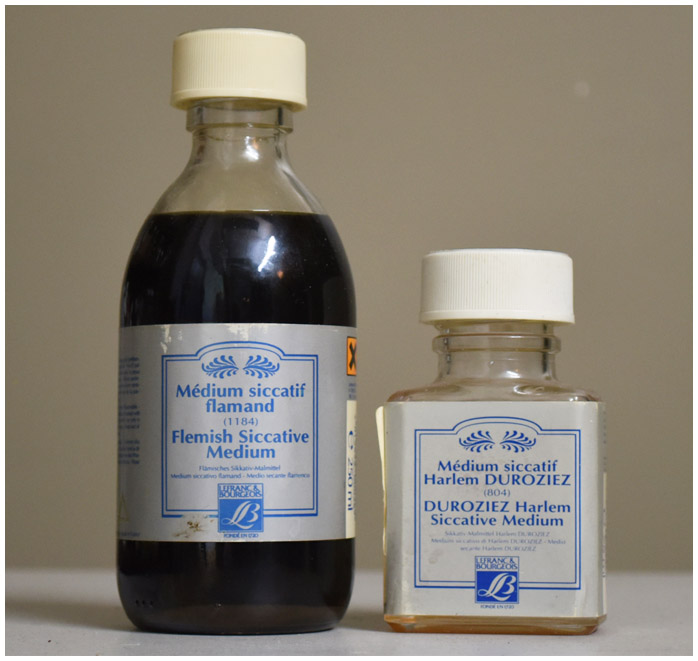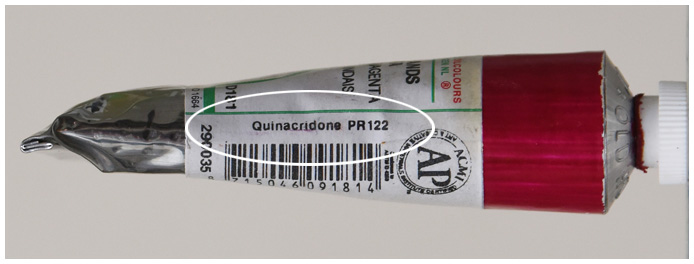The demi-pâte française
N.B. To my knowledge, there is no English translation of the term “demi-pâte” (demi=half and pâte=paste). The books dealing with this technique are of French origin and have never, to my knowledge, been translated into English. This could partly explain why few English-speaking painters are familiar with this technique, although they have great admiration for Bouguereau’s exceptional rendering. For example, the precious work of Xavier de Langlais “La technique de la peinture à l’huile” (The technique of oil painting), thanks to which I was able to direct my research in the right direction, is only published in French.
As its name suggests, the demi-pâte technique was practiced mainly by academic painters in the 19th century in France. William A. Bouguereau is the most famous representative. It was he and other masters of the same ilk such as Cabanel, Gérôme, Meissonnier and many other exceptional artists of that time who brought this technique to its maximum level of beauty and effectiveness.
ASPECT
As you can imagine, a work made in demi-pâte does not include impasto. The material is dense, smooth in appearance, lustrous and translucent. The colors are produced with delicacy – according to the degree of mastery of the performer.
USE – MALLEABILITY
execution and painters synchronize their work to make the most of this progressive grip. Thus, they can refine their rendering throughout their day. They repeat everything by layering several times until they can create the most subtle cool glazes at the end of the day.
Using a resinous medium once is enough to understand that all the pleasure of painting depends on it.
THE DEMI-PÂTE TECHNIQUE IS FOR WHO?
Painting in demi-pâte requires following a very rigorous execution protocol. So rigorous that it is essential to have reached a very high level of mastery to be able to use it.
The slightest hesitation during work will cause one to lose the momentum of progressive setting of the paste. Here, the hesitations, the incessant back and forth (doing, undoing, doing, undoing) are disastrous. Each brushstroke should be a step forward.
Therefore, even before starting to paint, it is essential to clearly visualize all the steps to follow to the final result, which implies devoting a lot of time to preparatory studies.
It may seem paradoxical, but the more rigorous the preparatory work, the more the rendering will be spontaneous because the mind is then rid of all preoccupations. Only the pleasure of painting remains.
RISK OF MISTAKES
The main constraint of the demi-pâte is having to respect long drying times (two weeks on average) between rework. The work done in one day can in no case be retouched the next day, otherwise it will cause very unpleasant embus.
If you are one of those people who can’t help but keep coming back day after day to their board in an intuitive and disorderly way, this technique is not for you.
CHEMISTRY AND PHYSICS OF MATERIALS
To practice the demi-pâte, it is essential to fully understand the behavior of the material and to do this it is necessary to have a maximum knowledge of the trade.
In fact, any painter worthy of the name and having professional pretensions must have a minimum knowledge of the properties of the products they use, regardless of the type of painting.
An introductory course in this knowledge is presented at the Académie des beaux-arts de Québec: THE SECRETS OF OIL PAINTING: MATERIALS AND THEIR PROPER USE
This course is available on video along with a written document (in french only)
To order the video: http://www.acbaqc.com/fr/video
You can watch the trailer on Youtube: https://www.youtube.com/@academiedesbeaux-artsdeque5530
Content:
Supports: Wood, canvas and other mounted supports
Coatings: Organic gesso with protein glue, acrylic gesso
Pigments: Stable pigments vs pigments to avoid, how to read a tube of paint
Oils: Properties, dryness. Clarity and yellowing, Durability
Resins: Function. Vegetal or synthetic resins, hard and tender, balms
Solvents: Vegetal solvents: D-limonene, rectified turpentine, essence of aspic
Petroleum-based mineral solvents, odorless solvents
Varnishes: Varnishes for painting and retouching. Temporary and final varnish
Their composition, function and when to apply them.
PAINTING MEDIUM by Bouguereau
It is presumed today that Bouguereau used copal resin-based mediums: Flemish Siccative Medium and Duroziez Harlem Siccative Mediummanufactured by Lefranc & Bourgeois, a house founded in Paris in 1720 and still active.

I painted for several years with these mediums. Copal is a very hard resin which gives the paint layer a very beautiful enamel appearance and gives the paste an unparalleled hardness thereby ensuring a very good durability to the work.
N.B. Contrary to all expectations, the dark color of the copal medium does not affect the brightness of the colors.
Unfortunately, the manufacturer (Lefranc & Bourgeois) recently stopped manufacturing this painting medium, which the company had been producing for at least two centuries. Pernicious effect of supply and demand.
Used properly, it was a very effective but rather temperamental medium. The progressive setting of the paste was done in trays spread over a period of about 8 hours. At the end of the session, the paste tended to cure quickly so that you could, for lack of experience, be surprised and not have finished the piece before the paste became too tacky.
HOME MADE PAINTING MEDIUM
Today, I paint with homemade mediums since there is no medium on the market that meets my expectations. It was friends and collaborators with the necessary skills in chemistry who developed the mediums that I use today. Through research and experimentation, we have succeeded in developing mediums which are perfectly suited to demi-pâte and which advantageously replace the Flemish drying medium. The setting is more regular and the execution time is extended, eliminating great stress in the execution.
It is possible that this medium will find itself on the market eventually if demand arises.
Contemporary chemistry has the means and knowledge that can greatly improve the quality of the materials available to painters of the past. Both in terms of mediums and colors (see next chapter: COLORS). For example, I mainly use D-limonene as a diluent.
COLORS
I only use extra fine colors whose durability is flawless. Some have been used by painters for a very long time, others, derived from contemporary chemistry, have advantageously replaced colors that were once too fragile. For example, colors of vegetal origin (Rubia tinctorium) such as Garance NR9 (Madder Lake, Carmin, Alizarin Crimson PR83 etc.) are very beautiful magenta reds but extremely sensitive to light. Fortunately, these days they can be replaced by very strong synthetic organic pigments such as PR122 quinacridones.
TO CHECK THE SOLIDITY OF YOUR COLORS
It is very important to read labels carefully. All the subtleties and codes to know are very well presented on: https://annemarieboisvert.com/comment-lire-une-etiquette/
In no case can we trust the poetic name attributed to the colors. All manufacturers of oil colors must indicate on their tube the composition of their colors according to an international code. Take note of this code and consult the MSDS: http://artiscreation.com

For information, here is the list of my favorite colors. My preference for Old Holland is certain, but I also use products from other manufacturers who make quality extra-fine colours.
OLD HOLLAND EXTRA FINE COLORS:
• TITANIUM WHITE (PW6)
SILVER WHITE (Cremnitz White) : LEAD CARBONATE (PW1)
• LIGHT SHEVENINGEN YELLOW : MONOAZO (PY74)
• MARS YELLOW: IRON OXIDE (PY42)
• CORAL ORANGE: PYROZOLO QUINAZOLONE (PO67)
• DARK SHEVENINGEN RED: CONDENSED AZOIC (PR214)
• MARS RED VENETIAN: IRON OXIDE (PR101)
• MAGENTA : QUINACRIDONE (PR122)
• MARS VIOLET – CAPUT MORTUUM: IRON OXIDE (PR101)
• CARIBBEAN BLUE: PHTALOCYANINE (PB16)
• OLD DELFT BLUE: INDANTHRONE (PB60)
• CHROMIUM OXIDE GREEN (PG17)
Coming:
MODUS OPERANDI – Process and application of the demi-pâte technique
STEPS :
Preparatory studies :
Research, drawings, composition, color range, cartoon for transfer.
Preparation of the palette and addition of the binder.
Preparation of the medium to be painted to lengthen the colours during execution.
Dilution of the medium to always paint fat on lean.
STUDIES AFTER BOUGUEREAU:
Execution in two layers
First layer: examples of Bouguereau at the end of his life.
Drying time to respect – risk of mistakes.
Second and last layer
Optional glazes